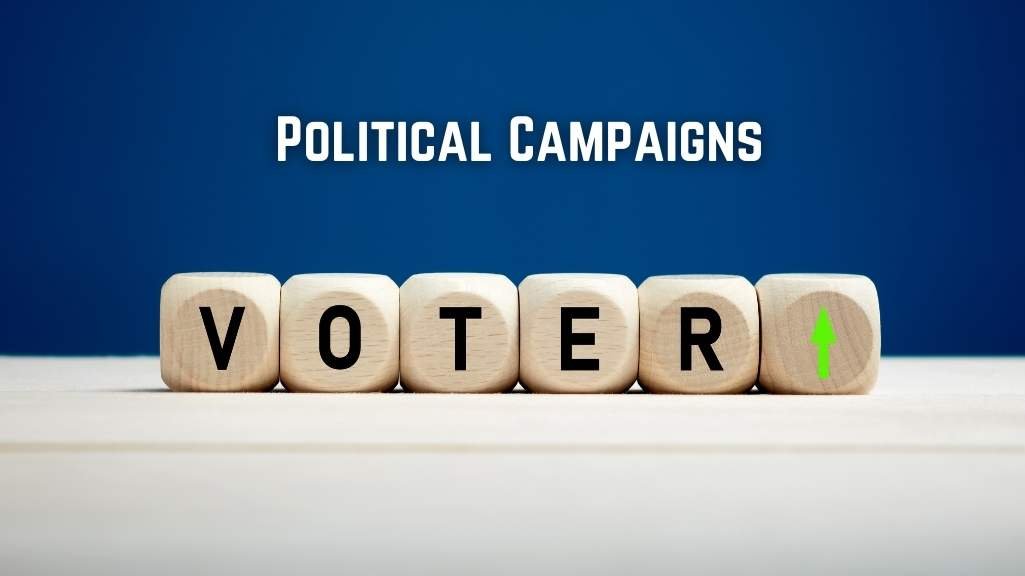Role of Political Campaigns and Media in Boosting Voter Turnout in the US
Ronit Agarwal
. 2 min read
In the United States, there is a significant amount of discourse that takes place somewhere between two and four years on the subject of how to increase voter turnout and participation. One potential solution that has emerged is the integration of video chat technology. This innovation allows individuals to engage in meaningful discussions and address concerns about the voting process directly, bridging the gap between citizens and governmental institutions. With the introduction of video chat, people can have real-time conversations with representatives from political parties, labor unions, religious institutions, and community-based organizations, fostering a sense of trust and promoting active involvement in the democratic process.

Art of Influencing Voters Through Political Campaigns
The path to the White House is a long one, not to mention an expensive and taxing one. The process of running for office starts with merely deciding to run as a candidate. Candidates who want to win elections need to convince voters that they are deserving of their individual votes and also win over electors who will cast the votes that count in the Electoral College.
Ways in which the Media have an Impact on Elections
It is correct to say that the media have played a significant part in politics ever since the First Amendment guaranteed the right to freedom of the press as a fundamental component of democratic government in the United States. Journalists have the responsibility of providing voters with the information they require to make informed choices, as it is the job of voters to make educated decisions.
Importance of Social Media in Politics
It's possible that most people are already familiar with social media. However, the significance of incorporating social media into political campaigns didn't become clear until Barack Obama, who was running for president at the time, did so in the 2008 United States presidential election. Candidates for political office can now more effectively communicate with voters in real time and reach a larger audience than with traditional media thanks to the power of social networking.
Role of Social Media in the Election Process
The impact of social media on political campaigns became more noticeable in the early 2000s. During his first run for the presidency, Barack Obama successfully mobilized a majority of voters with the help of social media. As a result, he was victorious in the election of 2008. According to the Pew Research Center, during Obama's first presidential campaign, approximately 74% of internet users looked for election news online, which represented 55% of the entire adult population at the time.
Acquiring an understanding of the various means by which to support federal candidates
Paying for public communications allows individuals and organizations to either support or oppose a particular candidate communications by means of any broadcast, cable or satellite communication, newspaper, magazine, outdoor advertising facility, mass mailing or telephone bank to the general public, or any other form of general public political advertising.
An Account of the Development of Voting in the United States
Voting in elections for both the federal government and the states is now a right that is automatically granted to most American citizens once they reach the age of 18, but this was not always the case in the United States. When it was first written, the Constitution of the United States did not specify who could or could not vote; however, it did lay out the procedures for how the new nation would elect its leaders.
Conclusion
In conclusion, increasing voter turnout and participation in the United States requires addressing the low level of trust in governmental institutions and political organizations. Political campaigns play a crucial role in influencing voters through the media, including social media, which has become a powerful tool for candidates to communicate with voters and mobilize support. Supporting federal candidates through public communications is another means of promoting political campaigns. Overall, promoting civic engagement and trust in institutions is essential to ensure a thriving democracy in the United States.
More Stories from
Preserving Cultural Heritage in the Face of Globalization
This article explores the challenges and strategies involved in safeguarding cultural heritage in an increasingly globalized world.
The Indian Navy: Safeguarding the Seas with Excellence
Explore the Indian Navy, a modern and formidable maritime force entrusted with safeguarding India's maritime interests.
The Enchanting Rhododendron: Himachal Pradesh's State Flower
Discover the captivating Rhododendron, the state flower of Himachal Pradesh, India. This vibrant evergreen shrub, native to the Himalayas, paints the landscape with breathtaking colors each spring.
Exploring the Uncharted: Speculative Insights into the World Beyond 2021
This article provides a brief overview of potential geopolitical shifts, technological advancements, environmental concerns, health challenges, economic developments.
Racial Justice and Inclusivity: Promoting Equality in Society
Explore the vital journey towards racial justice and inclusivity as we uncover the challenges faced by marginalized communities and the transformative power of inclusivity.











.png?width=40&aspect_ratio=1:1)

.png?width=40&aspect_ratio=1:1)